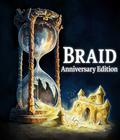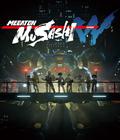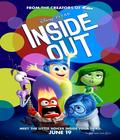Pixar has done it again. Take an unlikely concept (the inside of a pre-teen girl's head), tease out the details, make it incredibly relatable and BAM, the magic happens. "Inside Out" may happen in two simultaneous worlds, with a combination of both physical characters and personified emotions, but by the end of the film, you're bound to be in love with them all.
Riley (Kaitlyn Dias) is an 11-year-old girl who was born and raised in the Midwest. When her dad gets a job with a startup in San Francisco, the whole family is uprooted and moved to the West Coast. How Riley deals with the move could've been the basis of a film in and of itself, but "Inside Out" goes one step further by personifying Riley's five major emotions and showing us how they all interact to help guide her decisions.
Joy (Amy Poehler) is Riley's main emotion and tries to keep Riley's life as happy as possible. She is joined by Anger (Lewis Black), Envy (Mindy Kaling), Fear (Bill Hader) and Sadness (Phyllis Smith). All five are located in the control center of Riley's mind. From there, they can see through Riley's eyes (and view her dreams when she's asleep). Joy is the leader of the group, but all of them step up when needed as memorable events in Riley's life are recorded as memories. Key events are "core" memories, which are the basis for Riley's personality.
With Riley having mixed feelings about the move, Joy and Sadness get into an argument which results in Joy, Sadness and all five core memories being sucked into long term storage. These events cause Riley's personality traits (represented in the mind as islands) to become unanchored, resulting in unpredictable behavior. Anger, Envy and Fear try to cope, but none of them are Joy and, as a result, Riley starts lashing out at the real world, which has consequences for her mental state. How Joy and Sadness deal with these issues serves as the core of "Inside Out."
Without going into detail, the representation of Riley's mind is relatable to both kids and adults. There is a wondrous area called Imagination Land, where incredible things happen; Dream Productions, which is responsible for "filming" all of Riley's dreams; and the subconscious, which is where Riley's deepest fears live. Joy and Sadness get to meet Riley's imaginary friend, ride the "train of thought" and even discover why we can never seem to forget certain annoying jingles from commercials.
On a superficial level, the adventure works as a vivid story that can be taken at face value. It is two characters making their way through an unknown land in an attempt to get home. If you look deeper, there is a lot more here. "Inside Out" touches on everything from friendship to independence, self-sacrifice and learning to rely on others. Realizing that giving up control is sometimes necessary for a team to survive is an important lesson.
"Inside Out" also plays with traditional movie tropes, keeping some while subverting others. There is no easy identification of "good" or "bad" characters here. Everyone is simply doing their own thing. Constructing an entire film without a real villain is a challenge, but Pixar has somehow made it work.
Like most Pixar movies, there are plenty of laughs to be had, but "Inside Out" also pulls at the heartstrings. If you think you're going to get out of this one without a little water in your eyes, then you have a heart made of coal.
All five of the main cast do a great job, but Black as Anger deserves a special callout. It would have been easy to portray Anger as just a continually pissed off guy, but Black manages to humanize the character into someone to whom you can relate. He may be Anger, but he just wants the best for Riley (as they all do). Anger just can't help being gruff when he's at the controls, and he does have some of the best lines in the movie. Being a Chicago native, I can completely relate when he utters, "Congratulations, San Francisco, you've ruined pizza!"
The Pixar tradition of an animated short before a film continues with "Inside Out." The short film, "Lava," appears before "Inside Out" and tells the love story of two Hawaiian volcanoes. Though the short is technically proficient, it lacks the emotion and development of most Pixar works. Despite being about love, "Lava" ends up feeling hollow and is forgettable.
Thankfully, "Inside Out" is everything that "Lava" is not, impressing viewers on multiple levels. There are bits in the film that will appeal directly to kids, other bits clearly meant for adults, and even more that appeal to both. Jokes are had and lessons learned, but in the end, "Inside Out" is a deeply personal story that works because it connects with the on-screen character as well as the emotions that we all have inside of us.
It doesn't quite push "Wall-E" out of the top spot as Pixar's best work, but "Inside Out" is easily on par with other Pixar greats, like "Up." It accurately captures both the joy and the fears of childhood, while at the same time reminding us that all moments are precious.
Score: 9.0/10
"Inside Out" is rated PG-13 and has a running time of 1 hour and 35 minutes. It is showing in 2-D and 3-D.
Editor's Note: For more on Inside Out, be sure to check out our hands-on preview of the Disney Infinity 3.0 Inside Out Play Set.
More articles about Inside Out











 Growing up can be a bumpy road, and it's no exception for Riley, who is uprooted from her Midwest life when her father starts a new job in San Francisco. Like all of us, Riley is guided by her emotions: Anger, Disgust, Fear, Joy and Sadness. The emotions conflict on how to best navigate a new city, house and school.
Growing up can be a bumpy road, and it's no exception for Riley, who is uprooted from her Midwest life when her father starts a new job in San Francisco. Like all of us, Riley is guided by her emotions: Anger, Disgust, Fear, Joy and Sadness. The emotions conflict on how to best navigate a new city, house and school.





















